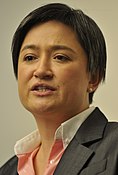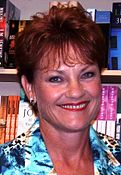| |||||||||||||||||||||||||||||||||||||||||||||||||||||||||||||||||||||||||||||||||||||||||||||||||||||||||||||||||||||||||||||||||||||||||||||
All 76 seats in the Australian Senate 39 seats needed for a majority | |||||||||||||||||||||||||||||||||||||||||||||||||||||||||||||||||||||||||||||||||||||||||||||||||||||||||||||||||||||||||||||||||||||||||||||
|---|---|---|---|---|---|---|---|---|---|---|---|---|---|---|---|---|---|---|---|---|---|---|---|---|---|---|---|---|---|---|---|---|---|---|---|---|---|---|---|---|---|---|---|---|---|---|---|---|---|---|---|---|---|---|---|---|---|---|---|---|---|---|---|---|---|---|---|---|---|---|---|---|---|---|---|---|---|---|---|---|---|---|---|---|---|---|---|---|---|---|---|---|---|---|---|---|---|---|---|---|---|---|---|---|---|---|---|---|---|---|---|---|---|---|---|---|---|---|---|---|---|---|---|---|---|---|---|---|---|---|---|---|---|---|---|---|---|---|---|---|---|
| |||||||||||||||||||||||||||||||||||||||||||||||||||||||||||||||||||||||||||||||||||||||||||||||||||||||||||||||||||||||||||||||||||||||||||||
 Government (30) Coalition | |||||||||||||||||||||||||||||||||||||||||||||||||||||||||||||||||||||||||||||||||||||||||||||||||||||||||||||||||||||||||||||||||||||||||||||
| |||||||||||||||||||||||||||||||||||||||||||||||||||||||||||||||||||||||||||||||||||||||||||||||||||||||||||||||||||||||||||||||||||||||||||||
2016 Australian federal election |
|---|
|
| National results |
| State and territory results |
|
|
The 2016 Australian federal election in the Senate was part of a double dissolution election held on Saturday 2 July to elect all 226 members of the 45th Parliament of Australia, after an extended eight-week official campaign period. It was the first double dissolution election since the 1987 election and the first under a new voting system for the Senate that replaced group voting tickets with optional preferential voting.
The final outcome in the 76-seat Australian Senate took over four weeks to complete despite significant voting changes. Earlier in 2016, legislation changed the Senate voting system from a full-preference single transferable vote with group voting tickets to an optional-preferential single transferable vote.[1] The final Senate result was announced on 4 August: Liberal/National Coalition 30 seats (−3), Labor 26 seats (+1), Greens 9 seats (−1), One Nation 4 seats (+4) and Nick Xenophon Team 3 seats (+2). Former broadcaster and founder of the Justice Party Derryn Hinch, won a seat, while Jacqui Lambie, Liberal Democrat David Leyonhjelm and Family First's Bob Day retained their seats. The number of crossbenchers increased by two to a record 20. The Liberal/National Coalition will require at least nine additional votes to reach a Senate majority, an increase of three.[2][3][4]
A number of initially-elected senators were declared ineligible a result of the 2017–18 Australian parliamentary eligibility crisis, and replaced after recounts.
Cite error: There are <ref group=lower-alpha> tags or {{efn}} templates on this page, but the references will not show without a {{reflist|group=lower-alpha}} template or {{notelist}} template (see the help page).
- ^ Nicole Hasham (3 July 2016). "Election 2016 results: Senate count throws up a wild mix as One Nation, Fred Nile, Liberal Democrats vie for seats". news.com.au. Retrieved 3 July 2016.
- ^ "AEC". Twitter. Retrieved 11 August 2016.
- ^ "Federal Election 2016: Senate Results". Australia Votes. Australian Broadcasting Corporation. 3 July 2016. Retrieved 4 July 2016.
- ^ "Senate photo finishes". Blogs.crikey.com.au. 12 July 2016. Retrieved 30 July 2016.







